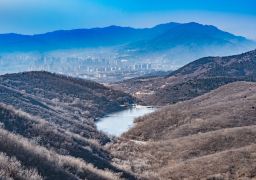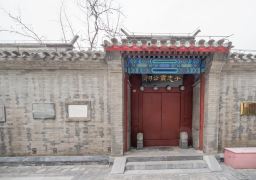Yongquan Zen Temple, located outside the west gate of Jincheng Town on Mei Ling, was founded in the second year of the Yuanfeng era during the Song Dynasty (1079). It was established by the Zen master Shancheng, who cleared the land with the support of Peng Quan, the deputy transport commissioner, who donated the land, making him the chief patron of the temple. The temple is named Yongquan because of the clear spring water that gushes from the rock crevices beside the temple, never drying up despite droughts.
The temple complex includes the Nine Dragon Wall, the mountain gate, the bell tower, the Guanyin Hall, and the scripture repository. In front of Yongquan Temple stands a stone pagoda, next to which there is a pavilion. The small stone pagoda, modeled after a wooden structure, is a multi-eaved tower-style architecture. The existing structure is a six-sided, six-storied pagoda that tapers upwards (originally seven stories), with a remaining height of 3 meters. Each face of each story is adorned with a pot door, inside of which is a statue of a Buddha sitting cross-legged on a lotus seat with hands clasped, and there are thirteen such statues remaining. The eaves of the stone pagoda are upturned at the corners, the top of the pagoda is carved with a triangular flame pattern, and a stone bead is placed inside. This stone pagoda provides physical evidence for the study of ancient tower structures in Cangnan County.Yongquan Temple
Yongquan Zen Temple, located outside the west gate of Jincheng Town on Mei Ling, was founded in the [...]









